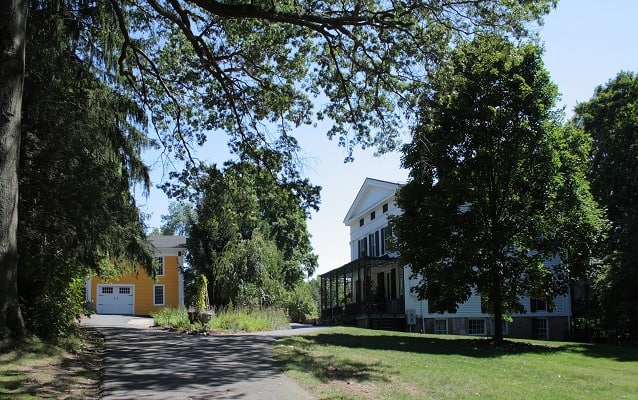Last updated: July 25, 2017
Place
Austin F. Williams Carriagehouse and House

Austin F. Williams and his wife Jennet Cowles Williams were known abolitionists. During the Mende's imprisonment, Williams corresponded with his friend Lewis Tappan, a member of the Amistad Committee. The Amistad Committee had been established for the defense of the Amistad captives and was raising funds for their return home. Williams, Samuel Deming and John Treadwell Norton arranged for the Africans to be sheltered in Farmington after their release from prison. Upon their arrival, the men and the one young boy, Kale, were housed on the second floor of Samuel Deming's store. More room was needed, and Williams offered to build a temporary living quarters for them.
The dormitory was erected in a communal barn raising on May 4, 1841, and served as the primary home for the African men during the rest of their stay in Farmington. This building is today the east section of the carriagehouse--the west section was added on after the Mende had returned to their homeland. The men worked in local agricultural fields during their stay.
Shortly after the Mende left, Williams built his own house slightly to the southeast and converted the dormitory to a carriagehouse, which remained in the Williams family until 1948. Oral tradition indicates that Williams was an Underground Railroad conductor and, along with other citizens, made the Farmington community a major Underground Railroad stop. After the Civil War, Williams was appointed director of the Freedman's Bureau of New England and New York and found housing and job opportunities for freed African Americans.
This is just one of many places associated with the Amistad event. To learn more about other places, please access the main Visit page of this itinerary.
